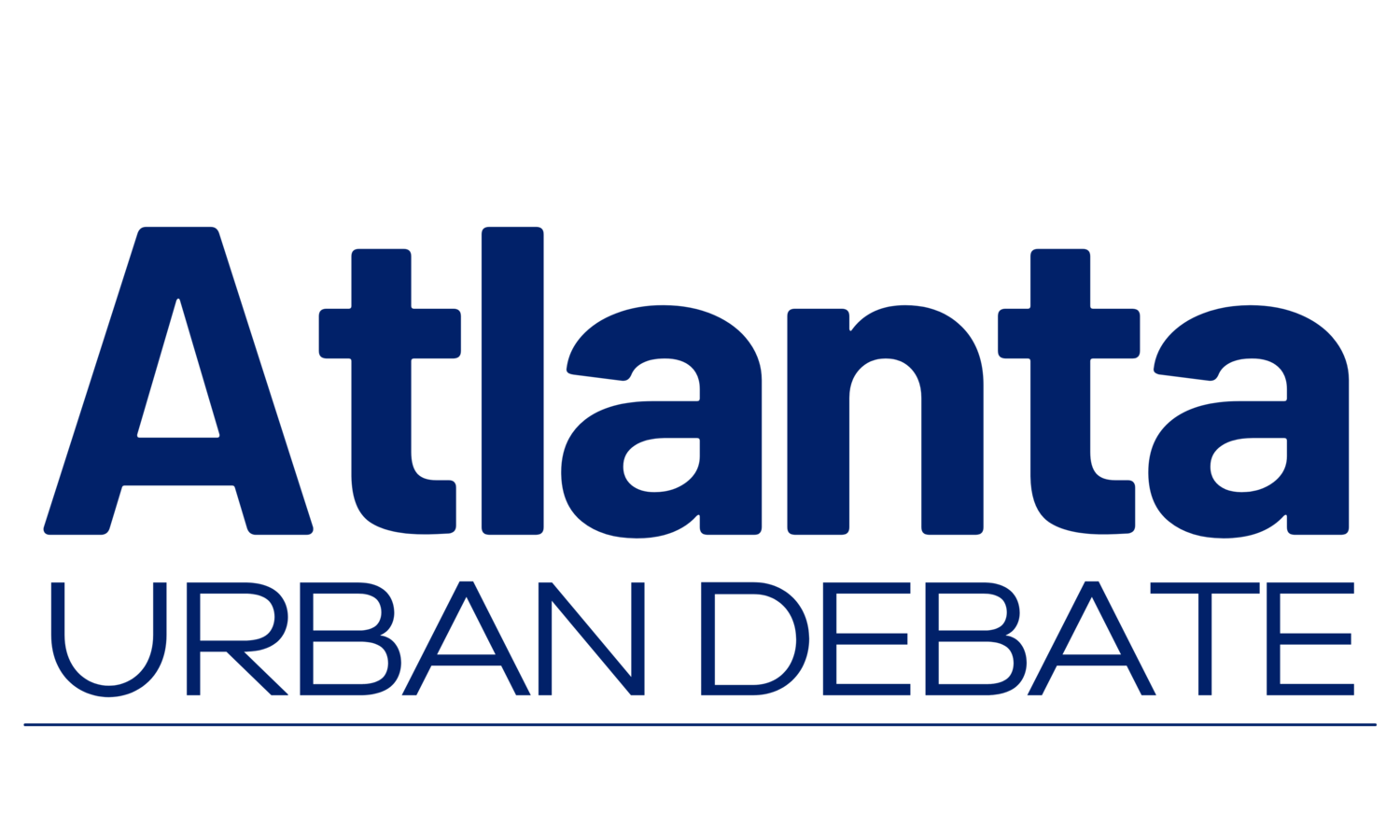The Atlanta Urban Debate League is committed to providing excellent debate education programs, services, and opportunities to diverse students, educators, and members of the community!
Middle School JV Curriculum Guide
Taking Notes (Flowing)
Flowing in Junior Varsity is a bit more important than flowing in Novice. Since each team can read different affirmatives, advantages, and disadvantages, there’s a lot more variability between speeches. As a result, it’s more important to pay attention and identify each argument. That way, you don’t waste time answering something that the other team didn’t say. Additionally, you’ll also remember to answer each argument that the other team made.
Flowing on Multiple Sheets of Paper
Because of the amount of new arguments, flowing can also be a bit more complicated in Junior Varsity. You should try to flow each advantage and disadvantage on separate sheets of paper. Instead of having just one sheet for the round, or instead of having one sheet for your affirmative and one sheet for the disadvantage, you may have four or more sheets in a single debate.
You’ll also want to keep track of authors and dates on each card, as that will help you do evidence comparison. To do so, draw an underline beneath each evidenced argument, and add the author name and date. If it’s not a card, don’t underline – that way you can tell which of their claims are purely analytical.
Flowing Overviews and Line-by-Line Arguments
Start getting in the habit of leaving some space at the top of each column on your flow as a dedicated place to flow overviews. You should start your numbering for the line-by-line from 1 under the space where you flow overviews.
For each individual argument, make sure to number and leave space before the next argument. This ensures that when you’re doing flowing the line-by-line debate, you have enough room for multiple responses and can easily reference arguments. When flowing responses, try to line answers up next to the arguments to which they’re responding. This will make it easy to see which arguments were answered and which ones were dropped/conceded. Here’s a sample case flow:
Argument Cross-Applications
You don’t have to extend every advantage or off-case position through a full debate round. In fact, you shouldn’t – you should pick one (or two, if you’re reading a CP and DA) to focus on in your round. That means you can safely drop the arguments you don’t want to go for.
However, just because you’ve made the debate smaller by not extending an argument, that doesn’t prevent the other team from extending their arguments from that part of the debate. While most of them may not be relevant to the rest of the debate round, some of them could be. These are called cross-applications.
Here’s an example:
Let’s say you the affirmative has read an advantage about human rights. You’ve read two disadvantages, both with war-related impacts, and the affirmative reads a card that argues “Human Rights comes first,” in response to one of the disadvantages. In the block, you choose not to extend that disadvantage. The affirmative is still allowed to extend the argument from the other disadvantage, however, because it’s still relevant to the arguments you’re making!
Using Cross-Applications
Cross applications are difficult, and it’s rare that you’ll have an opportunity to make a good one. To make a cross-application, you’ll want to follow the same formula as you would with an extension, but you’ll add an extra step. Say “cross-apply the [assertion] argument that I made on the [where you originally made the argument] debate,” then explain the reasoning, cite the author, and do any necessary evidence comparison.
Preventing Cross-Applications
Although cross-applications are rare, you should always think about how the other team can use a card they’ve read – or you’ve read – in a separate part of the debate. Always answer the arguments that you think could hurt you later on, even if they’re on a part of the debate you don’t plan to extend further.

